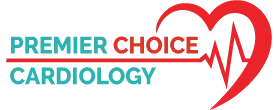
Hey there! Today, we’re going to delve into a topic that’s often misunderstood but absolutely critical: the difference between a cardiac arrest and a heart attack.
Cardiac Arrest – The Sudden Stoppage:
A cardiac arrest is like a sudden power outage in your heart. It happens when the heart’s electrical system malfunctions.
Heart Attack – The Blocked Highway:
A heart attack, on the other hand, is more like a traffic jam in your heart’s blood vessels. It occurs due to blockage.
Similar Symptoms, Different Causes:
Both cardiac arrest and heart attack can share similar symptoms, such as chest pain, shortness of breath, and dizziness.
Cardiac Arrest: A Silent Predator:
Cardiac arrests often strike without warning. Victims may suddenly collapse, lose consciousness, and stop breathing.
Heart Attack: A Gradual Intruder:
Heart attacks usually come with a warning. The pain builds up gradually and can be associated with nausea and extreme fatigue.
The Life-Threatening Reality of Cardiac Arrest:
Cardiac arrests are life-threatening emergencies. Without immediate CPR and defibrillation, survival rates plummet.
Heart Attack: Less Immediate but Still Serious:
Heart attacks are serious too, but they may give you more time to seek help. Immediate medical attention is crucial.
Causes of Cardiac Arrest:
Cardiac arrests are commonly caused by irregular heart rhythms (arrhythmias), often stemming from pre-existing heart conditions.
Causes of Heart Attack:
Heart attacks usually result from coronary artery disease, where arteries supplying the heart muscle get blocked by plaque.
Risk Factors for Cardiac Arrest:
Risk factors for cardiac arrest include a history of heart problems, drug abuse, and severe electrolyte imbalances.
Risk Factors for Heart Attack:
Risk factors for heart attack include high blood pressure, high cholesterol, smoking, and a family history of heart disease.
Preventing Cardiac Arrest:
Preventing cardiac arrest involves managing underlying heart conditions and avoiding triggers like excessive drug use.
Preventing Heart Attack:
Preventing heart attacks means keeping a healthy lifestyle, managing risk factors, and getting regular check-ups.
Diagnosis of Cardiac Arrest:
Cardiac arrest is diagnosed when the heart suddenly stops beating, often requiring immediate CPR and defibrillation.
Diagnosis of Heart Attack:
Doctors diagnose heart attacks using tests like ECG, blood tests, and angiograms that detect artery blockages.
Treatment for Cardiac Arrest:
Immediate treatment for cardiac arrest includes CPR, defibrillation, and medications to stabilize the heart’s rhythm.
Treatment for Heart Attack:
Treatment for a heart attack may involve medications, angioplasty, stent placement, or bypass surgery to restore blood flow.
Recovery from Cardiac Arrest:
If we tak about recovery from cardiac arrest, it depends on how quickly treatment is administered and any underlying heart conditions.
Recovery from Heart Attack:
Recovery from a heart attack can be slow, and it often involves cardiac rehabilitation and lifestyle changes.
Long-Term Consequences of Cardiac Arrest:
Survivors of cardiac arrest may face neurological issues or have a higher risk of future episodes.
Long-Term Consequences of Heart Attack:
Heart attack survivors may need ongoing medications and lifestyle changes to prevent future incidents.
Seeking Help: Don’t Delay!
Whether it’s a cardiac arrest or a heart attack, never hesitate to seek immediate medical assistance. Time is of the essence.

In the end, understanding the difference between cardiac arrest and a heart attack can be a matter of life and death. It’s not just medical jargon; it’s knowledge that can help you and those around you respond effectively in an emergency.
Therefore, please remember to stay aware, maintain your health, and share this information. You might just save a life one day. Stay safe, everyone!




